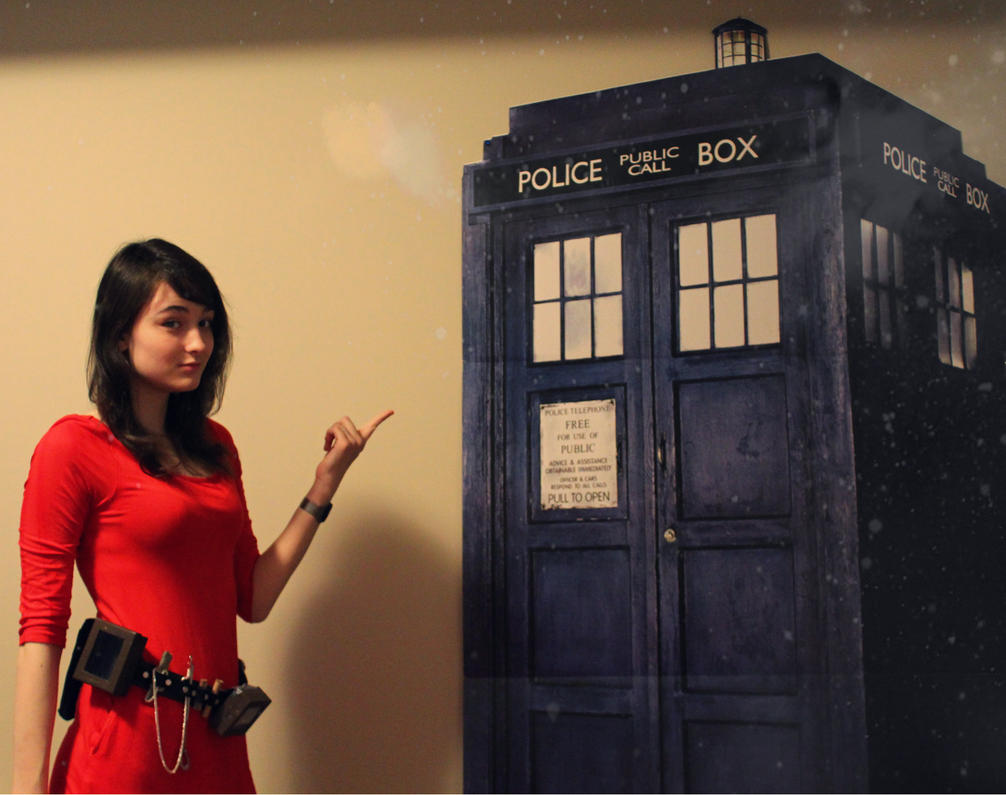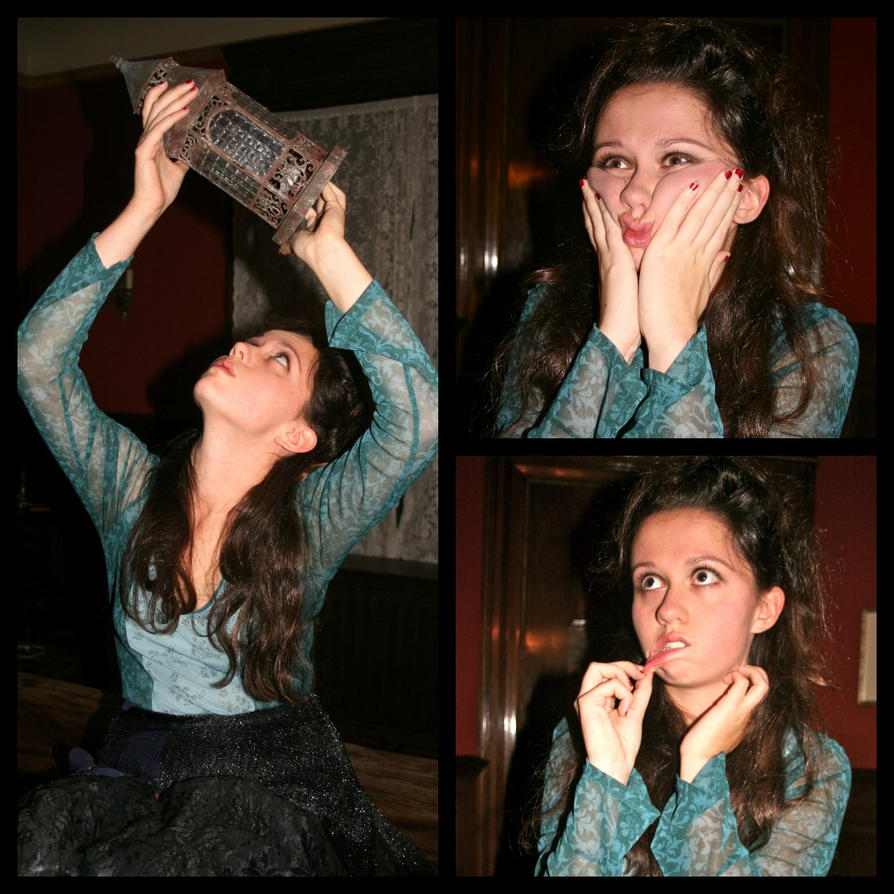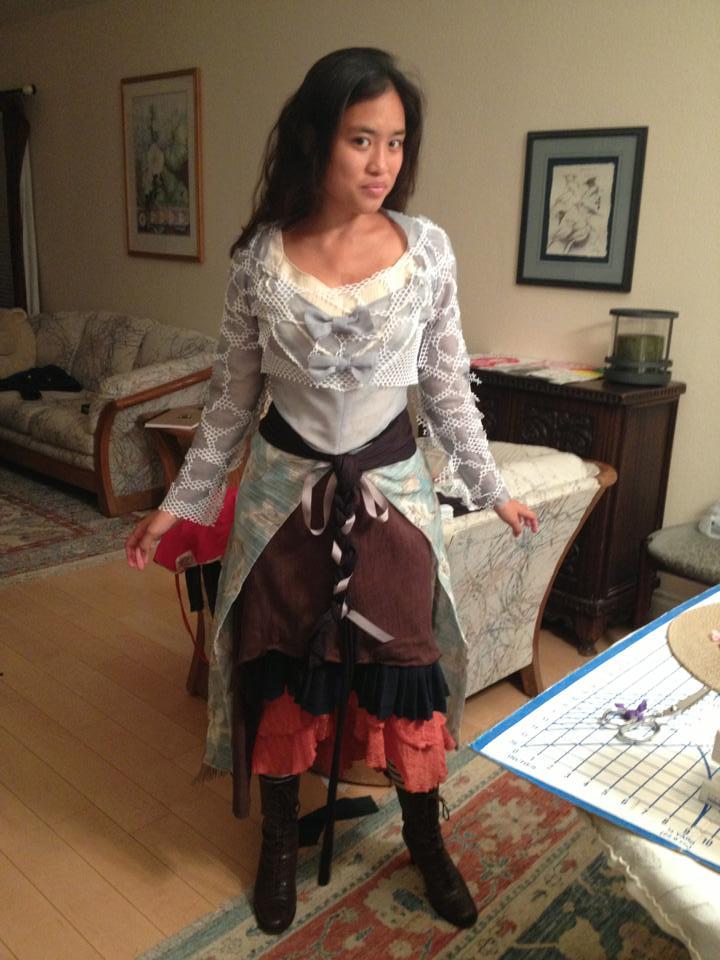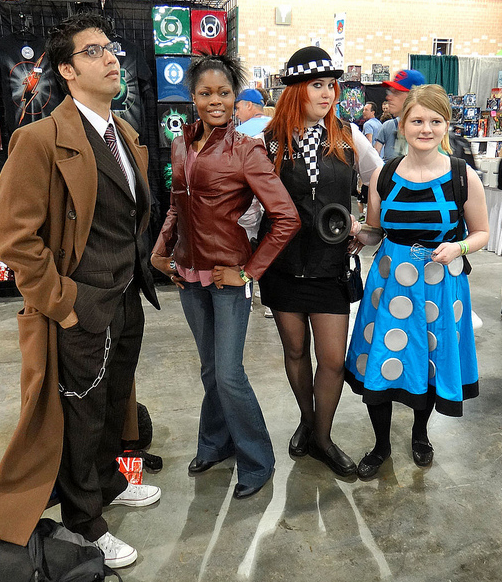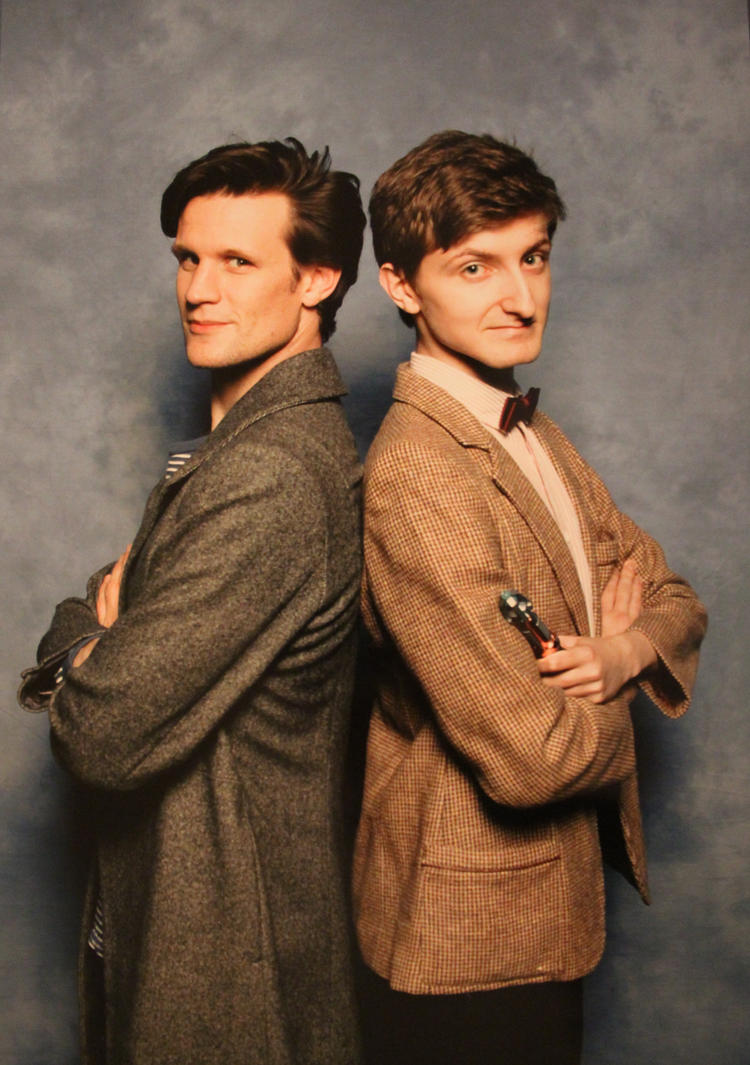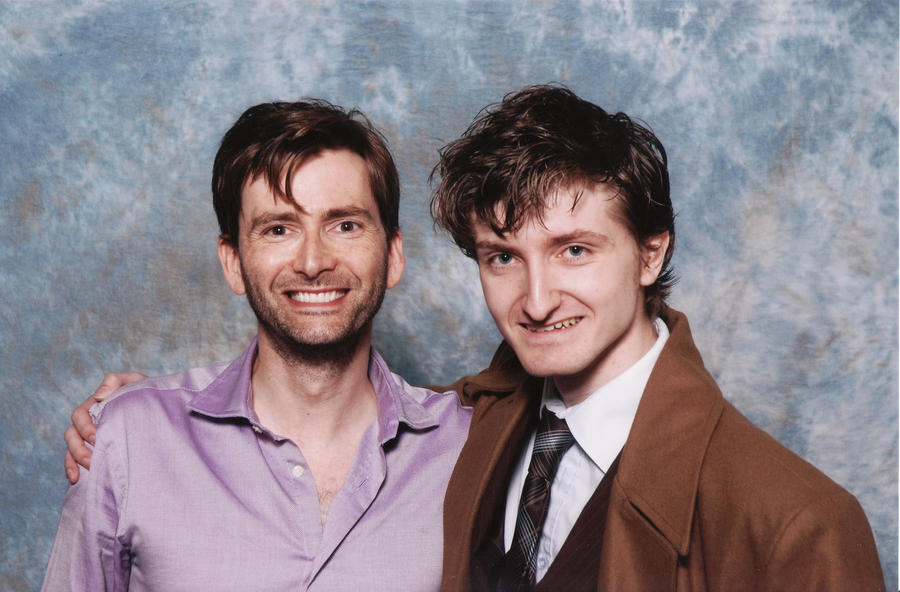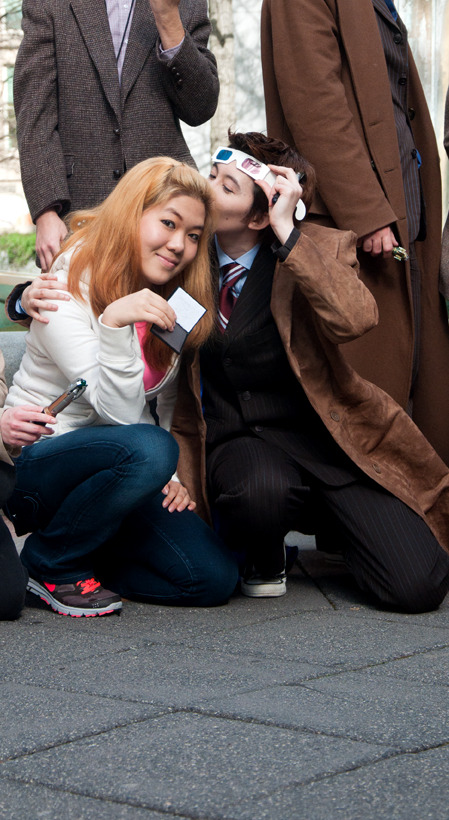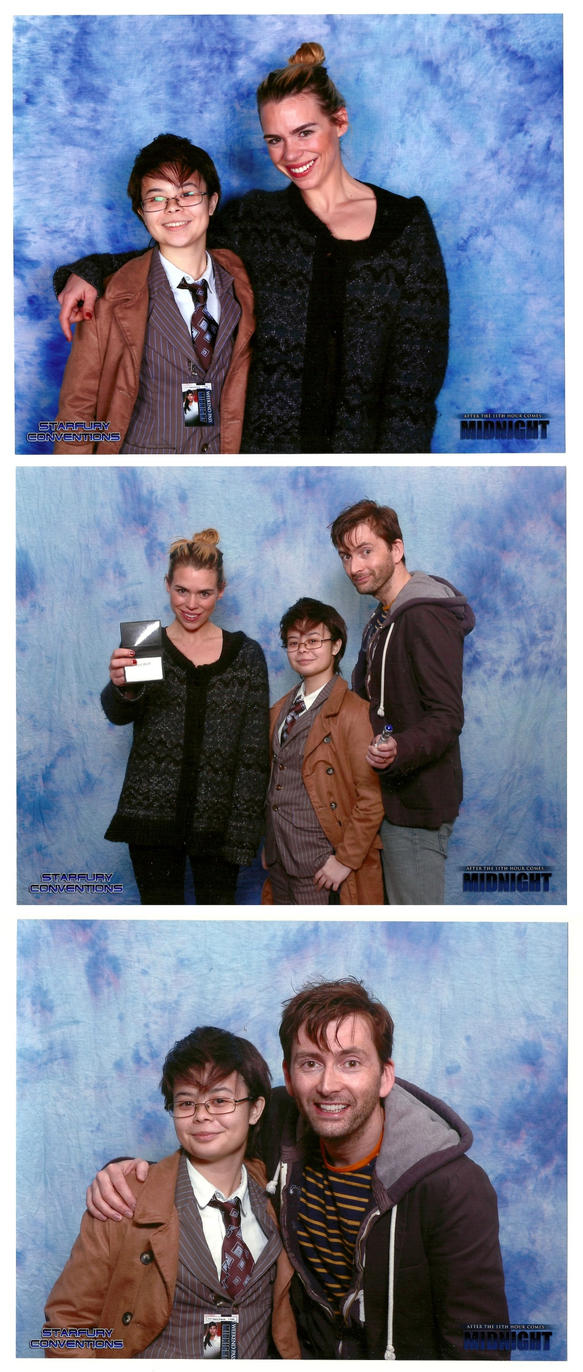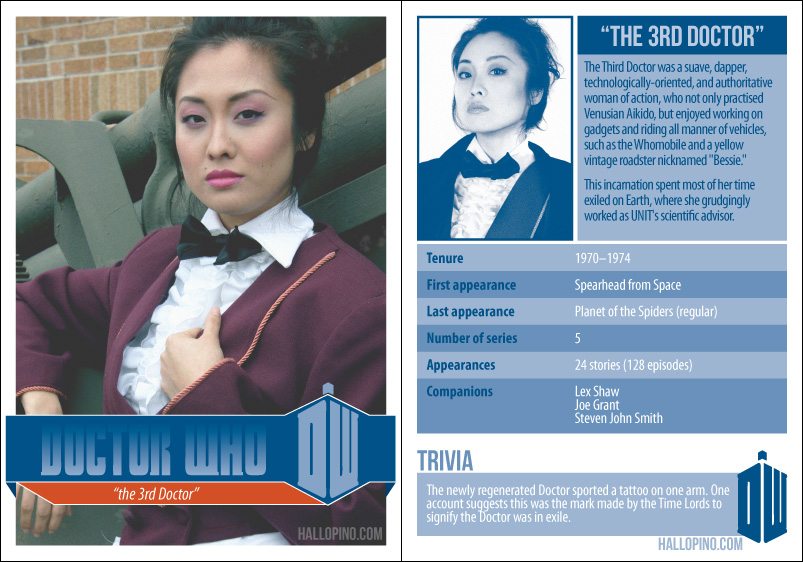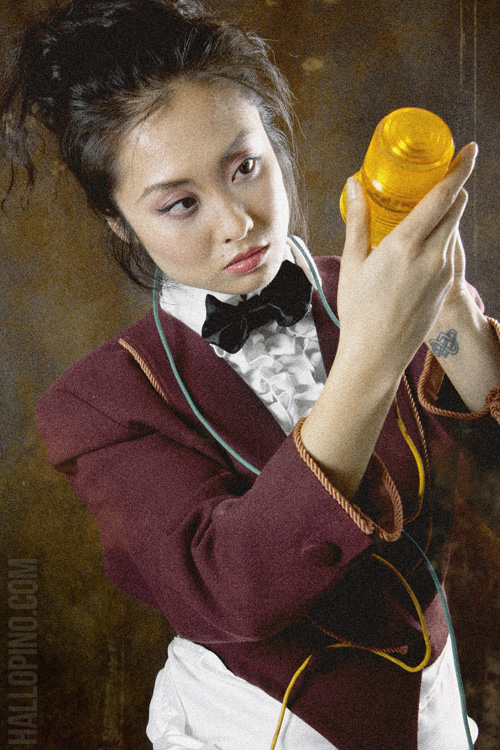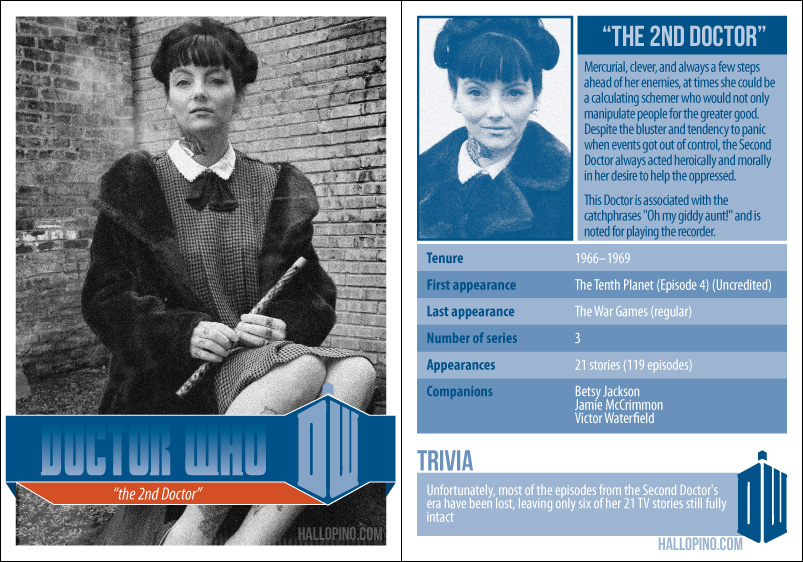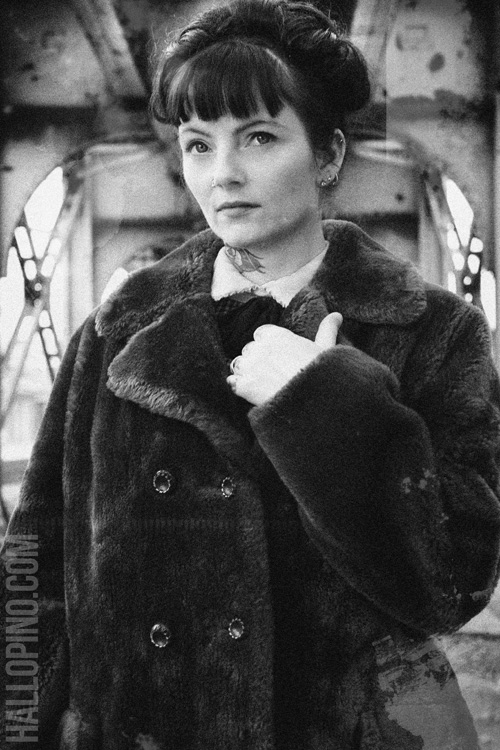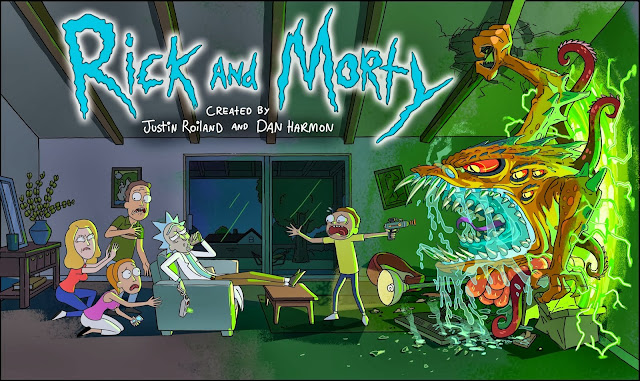![Blue Is the Warmest Color: The Animated Series! Next summer on Toonami!]() |
| Samurai Flamenco, "Capture Samumenco!" |
Every Friday in "'Brokedown Merry-Go-Round' Show of the Week," which was formerly called "5-Piece Cartoon Dinner," I discuss the week's best first-run animated series episode I saw. It's time to look back at the biggest standouts of the episodes I discussed in 2013 (in chronological order). "Brokedown Merry-Go-Round," a two-hour block of original score tracks from animated shows or movies, airs weekdays at 2pm Pacific on AFOS. "'Brokedown Merry-Go-Round' Show of the Week" returns on January 10.Bob's Burgers, "Mother Daughter Laser Razor" (from January 9, 2013)It took me about a few episodes of
Bob's Burgers to get used to the weirdness of female characters being voiced by male comedians (kind of like how a viewer who's never seen
The Venture Bros. before catches
TVB for the first time and keeps wondering, "Why does that brunette chick sound like a dude?"), but now that I'm no longer distracted by that casting quirk, I consider
Bob's Burgers to be the current crown jewel of the Fox "Animation Domination" block.
Bob's Burgers creator Loren Bouchard has taken the best elements of his Squigglevision cartoons
Dr. Katz, Professional Therapist and
Home Movies--overlapping dialogue, great comedic voice acting by performers who weren't previously associated with animation, nicely written kid characters--and put them into a show with top-shelf animation (no off-putting squiggling during this one).
Add to those elements a recurring and interesting art-vs.-commerce conflict between Bob (H. Jon Benjamin) and his business rivals that
Bouchard has said was inspired by the 1996 Italian restaurant movie
Big Night--plus timeless storylines that deal with the unspoken affection the family members have for each other without getting too goopy--and you have a cartoon that's outlasted the
Allen Gregorys and
Napoleon Dynamites of the world and, due to its timeless writing, has the potential to age better in reruns than
Family Guy's random pop-culture reference gags and the equally reference-heavy and spotty later seasons of
The Simpsons. "Mother Daughter Laser Razor" is a great example of the Bouchard show's exploration of the bonds between the Belchers without resorting to those sitcom hugging scenes that made '80s studio audiences go "Awww" and made me want to go shoot myself.
Written by Nora Smith, "Mother Daughter Laser Razor" pairs off two characters who don't share a lot of scenes together--nine-year-old sociopath Louise (Kristen Schaal) and the parent she doesn't favor, the overly perky Linda (John Roberts, one of two male cast members on this show who voices females)--while continuing to explore how Louise's older sister Tina (Dan Mintz, the other actor playing female) seems to have inherited everything from Bob. Those attributes include a lonely and largely friendless childhood similar to the one we saw young Bob experience in "Bob Fires the Kids," Bob's calm demeanor and now, his hairiness.
![Here's a deleted scene between Jeremy Sisto and Jane Levy from Suburgatory.]()
At Dad's restaurant, Tina overhears a couple of popular classmates gossiping about another girl's hairy legs and realizes her own legs are equally hairy and susceptible to ridicule, so she asks Bob to take her to get her legs waxed after a couple of failed attempts to have them sheared. Lin was supposed to shave Tina's legs, but Lin, who's been fuming over Louise's frequent hostility towards her, is too distracted and angry to be entrusted with a razor, and as resident weirdo sibling Gene (Eugene Mirman) notes in one of the few observations of his that make any sense, "I don't think you should shave angry."
Lin's misguided solution to getting Louise to like her better is to trick her into taking part in a mother-daughter bonding seminar run by Lin's current favorite mommy blogger, "the Phenomimom," who turns out to be a creepy man named Dakota (Tim Heidecker from
Tim and Eric Awesome Show, Great Job!) who holds his seminars next door to a laser-tag fun zone that's more to Louise's liking. Dakota's "Modo Time" methods of getting disgruntled kids to bond with their moms are, of course, pointless and ineffective. They range from lame role-reversal improv games to forcing the kids to re-experience their days as fetuses while trapped inside "vagi-sacks," a.k.a. sleeping bags.
Because
Bob's Burgers is a very good cartoon as opposed to a sloppy one like
The Simpsons' fake
Itchy & Scratchy & Poochie Show that sets up the presence of a fireworks factory and then fails to utilize it as a gag, "Mother Daughter Laser Razor" makes it to the fireworks factory when Louise frees herself and the other kids from their hellish seminar experience and leads them to escape to the laser-tag fun zone, where Louise and Lin finally end up bonding over laser guns aimed at an enraged Dakota. If this were
The Young Ones, the anarchic Louise's love of destruction and criminal activity would make her Vyvyan. Between the attraction to laser-tag and her enjoyment of Bob's favorite spaghetti westerns in "Spaghetti Western and Meatballs," I wouldn't be surprised if this mini-Vyv grows up to become an action movie director, just like how Gene is bound to become either a hacky morning zoo DJ or a hacky stand-up and Tina is headed towards becoming either a chef like her dad or an essayist penning Paul Feig-esque best-sellers about her awkward adolescent experiences.
The kid characters are the best part of
Bob's Burgers. That's mainly because they--particularly the nutty and over-enthusiastic Gene--talk and behave more like real kids who don't really know much about the world outside the restaurant and the playground and less like precocious Huey Freeman-style stand-ins or Mary Sues for their adult creators (although Aaron McGruder's use of Huey as the voice for his politics on the
Boondocks cartoon works quite well for that show).
My favorite example in this episode of the Belcher kids being such kids--other than Gene's desire to get a scrotal wax despite not fully grasping how painful it likely is--is a quick gag that's easy to miss, and a lot of them can be easily missed due to the overlapping dialogue that's distinguished
Bob's Burgers from
The Simpsons and the Seth MacFarlane cartoons. When Louise tries to back out of mother-daughter time, she communicates to Lin her reluctance to spend time with her by using break-up lines she's overheard from either dozens of break-up conversations between couples at the restaurant or break-up scenes in rom-coms: "Look, I think we should spend some time apart. I'm just not really looking for something serious right now. You understand--I mean, yeah, it's gonna be a little awkward, you've got some of your stuff at my place, we live together...""I think we should spend some time apart" are words I hope I'll never have to say to
Bob's Burgers.
***
Archer, "Fugue and Riffs" (from January 23, 2013)Episodes like "Fugue and Riffs,"
Archer's wildly funny and violent fourth-season premiere, are exactly why I wanted to expand "5-Piece Cartoon Dinner" to include adult cartoons at the end of last year. "When the new year approaches," I asked myself, "do you want another year of sitting through
Ben 10 reboots that cause your attention to wander or awfully written
Ultimate Spider-Man episodes, or do you want to put that part of your time to better use, like covering adult cartoons that are more up your alley and are worthier of discussion and analysis?"
"Fugue and Riffs" is the kind of adult cartoon episode I should have been focusing on in the first place. It's another sharply written story involving ISIS agent Sterling Archer's ongoing conflict with his mother/boss Malory (Jessica Walter), and it contains a brilliant crossover with lead voice actor
H. Jon Benjamin's other current cartoon, more semi-nudity from Lana Kane (Aisha Tyler) and
esoteric references that are funny simply because they're so damn esoteric (British spy hero Thomas Elphinstone Hambledon! Manning Coles, the duo that created Hambledon! The star of
Shazam!Émile Zola!). You won't see Spidey cracking a joke that's a nod to Zola's "J'accuse" letter during
Ultimate Spider-Man, that's for damn sure.
The season premiere opens with Archer tending the grill at the exact same titular restaurant from
Bob's Burgers, Benjamin's other show, while surrounded by the Belcher kids and Linda (John Roberts, the only
Bob's Burgers voice actor reprising his role), who gets to berate Archer with one of the
various insulting nicknames that have become one of the Adam Reed cartoon's trademarks ("Well, excuse me, Ike Turner!"). Instead of appearing in their more familiar character designs from
Bob's Burgers, Tina, Gene, Louise and Linda are awesomely redesigned to blend in with
Archer's '60s comic book aesthetic.
I like how the cold open strings us along into thinking Archer is undercover as a burger joint owner as part of some ISIS op, until it becomes clear that it's no op and he has no memory of his life as an ISIS agent, although a few pieces of that life remain. They include fighting skills, which Archer puts to use during a badass and extremely gory restaurant confrontation with KGB assassins straight out of
A History of Violence, his literary tastes (he dubs the restaurant's newest burger "a Thomas Elphinstone Hambledurger with Manning Coleslaw") and his metrosexual side ("What I am gonna do is find out who this Archer jerk is... I'm also probably gonna do a spa weekend").
It turns out that two months ago, Archer developed amnesia due to a moment of extreme stress and ran away to a new life as a seaside fry cook named Bob. He married Linda and apparently became her second husband, which makes me wonder what happened to the original Bob in this universe (Alex, I'm gonna go with "What is dead?," and because much of this show's humor thrives on kinky or
freaky behavior, I wouldn't be surprised if Linda has been remolding Archer
Vertigo-style to look more like Bob). Both ISIS and the KGB are after Archer for different reasons: Malory assigns Lana, Cyril (Chris Parnell) and Ray (Reed) to stage a fake run-in with the KGB in front of Archer to try to jog his memory and get him back to the agency, while bionic villain Barry Dylan (Dave Willis) sends more KGB assassins to eliminate Archer.
Part of the fun of "Fugue and Riffs" is trying to figure out the stressful moment that triggered Archer's amnesia. We're given a clue early on when Malory complains that her son hates seeing her be happy, and when the catalyst is revealed at the end to be neither a bomb explosion nor a
Bourne Identity-style, ISIS-sanctioned attempt on his life, but something far less action-y--Malory's wedding to Ron Cadillac, the most successful Cadillac dealer in the Tri-State Area--it makes perfect sense within the neurotic, wracked-by-mommy-issues world of
Archer. In a great bit of stunt-casting, the show has recruited
Ron Leibman from
The Hot Rock and
Friends, as well as Walter's real-life husband, to voice Malory's new hubby, who's won over everyone at ISIS during Archer's two-month absence and whose presence this season is bound to reignite an old thread from a couple of seasons ago: Archer's search for his biological father. (Archer reportedly
begins to form a bond with Ron in the new season's fourth episode. I can't wait to see if Reed, who's
obsessed with the movies of one-time
Archer guest star Burt Reynolds, will toss into that episode a reference to
The Hot Rock or Leibman's other '70s crime-genre cult favorite,
The Super Cops.)
The rest of the fun of "Fugue and Riffs" involves being reacquainted with the elements that make
Archer such an entertaining adult cartoon, from the batshit crazy behavior of Dr. Krieger (Lucky Yates) and office subordinates Pam (Amber Nash) and Cheryl/Carol (Judy Greer) to the self-satisfaction Archer gets from anything he does or says, particularly his esoteric jokes, as if he's a boy who just discovered cursing. Archer may be a competent, book-smart, sharply dressed and jet-setting spy with a sex life many of us
Archer viewers would kill for, but deep down, he's really just a kid who never grew up and knows only how to be a narcissistic asshole, thanks to screwed-up parenting from an asshole of a parent. "Fugue and Riffs" reinforces Archer's childishness when he woo-hoos like a kid over the Molotov cocktails he and Lana lob at the assassins, or when one of Lana's attempts to get him to remember ISIS tanks and causes him to go off on a tangent about his love for
Shazam!, which sometimes crossed over with the superheroine show
The Secrets of Isis in the '70s--a nod to how this episode crosses over with
Bob's Burgers.
No wonder Archer identifies so much with Shazam, née Captain Marvel, even in his fugue state. Shazam is a boy in a grown man's body, just like Archer.
***
Regular Show, "That's My Television" (from March 6, 2013)Regular Show writers/storyboarders Madeline Queripel and Andres Salaff were responsible for one of the show's most unengaging shorts, this season's Fourth of July-related "Firework Run," a borderline racist episode that felt like a right-winger's worst nightmare about the Mexican gangster villains from Robert Rodriguez's Mariachi trilogy, even though Salaff himself is Latino (at the end of "Firework Run," the main heavy was revealed to have been a robot, perhaps a "
Kim Jong Il is really
an alien cockroach, so that's why we made his Engrish accent so cartoonishly thick"-style attempt to make the episode come off as less racist.) Queripel and Salaff also happen to be behind one of the show's best shorts, "That's My Television," an imaginative and wildly funny installment where Mordecai and Rigby come to the rescue of one of their favorite childhood TV stars, a talking TV set named RGB2 (Sam Marin), who's grown tired of showbiz and wants to flee to a much quieter life in a destination known as "Pine Mountain."
RGB2 starred as himself on the crappy '80s sitcom
That's My Television, and a nameless TV network has brought back into production the still-popular show, which brings to mind every corny '80s housekeeper sitcom you've seen, whether it's
Gimme a Break,
Mr. Belvedere or TBS'
ultra-cheesyDown to Earth (RGB2's signature catchphrase is "I hope you saved room for dessert!"). But RGB2--who needs to ingest cans of "'80s Air"
a la Perri-Air from
Spaceballs in order to survive--isn't enjoying a single minute of the revival, especially because the network is run by an intimidating exec who looks like Cartoon Network founder/owner Ted Turner (but doesn't sound like him at all and is voiced here by
Jeff Bennett) and sends armed thugs in suits to threaten his stars if they don't do what he says.
At RGB2's Comic-Con-style meet-and-greet with his fans, Mordecai and Rigby win a drawing to receive
That's My Television DVDs signed on the spot by RGB2 himself, and the star secretly pleads with the duo to help him escape to Pine Mountain. Mordecai and Rigby agree to help out their sitcom idol--it's not surprising that these slacker park workers identify with a domestic worker who frequently gets into comedic misunderstandings with the head of the household ("RGB2, room for dessert doesn't actually mean a whole room full of dessert!")--and their kind gesture sends Faux-Ted and his network thugs chasing after them in the most entertaining animated car chase I've seen in a while. Either Queripel or Salaff is enamored with both
Casino Royale's badass airport tarmac stunt in which the jet wash of an incoming plane sends
a police car flying through the air and the
Guinness World Record-breakingAston Martin cannon roll stunt from the same film because during the chase sequence, a couple of the network minions' Humvees are seen tumbling through the air in similar fashion.
RGB2 is clearly a riff on ALF, R2D2 and the dwarf actors who played them:
Michu Meszaros sweated his balls off inside ALF's costume whenever a scene on
ALF didn't call for the ALF puppet to be used, while R2 was operated by
Kenny Baker, whose autograph adorns the liner notes of my CD copy of the expanded 1977
Star Wars soundtrack. The parallels to Meszaros and Baker are made plainly clear in the episode's nutty, disturbing and oddly affecting twist ending, when Mordecai and Rigby discover that RGB2 isn't a sentient TV set and has actually been a naked old actor inside the TV the whole time, which explains the need for '80s Air to help the poor guy breathe inside that damn TV. The dying man's destination turns out not to be a mountain but a billboard in the middle of nowhere for Pine Mountain Gas (presumably the gas station he either left behind to pursue stardom or was discovered at when the network was on the lookout for someone to operate RGB2).
![2013 air does not impress the shit out of RGB2.]()
Just like how this naked guy stayed hidden inside what was basically a mobile prison for over three decades, hidden within the '80s gags, the hilariously over-the-top car chase, the gunplay and the jabs at both focus group-driven TV and network exec jargon are serious questions about fandom, the pressures the public puts on TV stars and viewers' relationships with those stars and the TV industry--hence the double meaning of the title "That's My Television," which refers to both RGB2's show and people's attachment to the idiot box. The episode asks us to decide which kind of TV fan do we want to be by presenting two types of fans. Do we want to become so attached to TV that we degenerate into the mean and deranged middle-aged fangirl from RGB2's meet-and-greet who doesn't care for the well-being of a star like RGB2 and demands that he continue to entertain her even if the entertainer isn't happy or right in his mind or is endangering his own life by playing this character? Or do we want to be more like Mordecai and Rigby, who aren't as out-of-control in their fandom, are more understanding about RGB2's misery and are treating him more like a human being--even though for almost the entire episode, they think he's just a talking TV set?
"That's My Television" also questions whether it's worth it for performers like RGB2's portrayer to sacrifice a normal life--and their health--for fame and syndication money. Fortunately, the episode raises these questions without a single bit of speechifying and without trotting out Mordecai and Rigby after the episode to address the audience and deliver a moral like Filmation used to do with its characters. That's how terribly written most cartoons used to be back in the day. To borrow the words of one of the network thugs who get attacked by Mordecai, Rigby and RGB2 with weaponized cans of '80s Air, "Aw, sick! It smells like the '80s!"
Other memorable quotes:* RGB2 defends himself with a rocket launcher: "It was a gift from the Russian Prime Minister! He loves the show!"
* "Bravo, gentlemen, bravo! Overall, that was a pretty nice PG getaway. Way to reach out to the 18-to-35 demographic. Oh, and nice third-act climax, by the way. The helicopter explosion really tied it all in with a cherry on top."
* "We just have a couple of notes for you. You see, our research groups have shown that nobody wants to see the good guys win anymore."
* The network exec threatens Mordecai, Rigby and RGB2 with his new, heavily armed and
Poochie-like action star, who emerges on a skateboard: "Our focus group studied everything that boys ages nine to 14 find the most brutal and destructive!"
* "I'm not dead! I was just resting."
***
Scooby-Doo! Mystery Incorporated, "Come Undone" (from April 10, 2013)"Come Undone," the
Scooby-Doo! Mystery Incorporated series finale, takes one of the most wack and least imaginative story resolutions in sci-fi,
the reset button, and somehow makes it work, much like how
Mystery Incorporated took a franchise that was entertaining only when you were a kid--and had become so unwatchable--and made it appealing again and genuinely dark and funny. The Mystery Incorporated team manages to defeat the Evil Entity, the previously imprisoned Anunnaki deity that's responsible for all the costumed criminals and evilness in Crystal Cove and has ended up consuming all of the town's inhabitants except for the detectives (in a series of scenes that are the darkest and bleakest this franchise has ever gotten and are therefore, awesome). Their triumph over the entity erases every trace of it from existence and creates a new timeline where Crystal Cove, "the Most Hauntedest Place on Earth," is now "the Sunniest Place on Earth" because the entity wasn't there to corrupt any of it.
Fred, Daphne, Velma, Shaggy and Scooby discover that their lives in this new timeline are perfect, and everyone who was previously killed off, including Velma's lesbian lover
Marcy (let's face it,
Linda Cardellini's reading of Marcy's last line in "Come Undone,""That's my girl," confirms it), is alive again. (Patrick Warburton's Sheriff Stone says the funniest line in "Come Undone," when he introduces his and Mayor Nettles' kids: "Now Eastwood, Norris and Little Billy Jack need to be asleep by eight. Lynda Carter here can stay up as long as she likes, on account of her being more adorable than her brothers.") But in a great turn of expectations, everyone in the team is dissatisfied with this timeline because there are no mysteries for them to solve.
Then here's where "Come Undone" cleverly handles the reset button: previous
Mystery Incorporated guest star Harlan Ellison--the new Mr. E in this timeline and the only other person who knows of the changes the team made to the previous timeline because of his ability to see the events of alternate dimensions--contacts the detectives to let them know that he's enrolled them as students at his campus of
Miskatonic University, the same setting from H.P. Lovecraft stories. At Miskatonic, there'll be plenty of mysteries for the team to solve, so in a brand new Mystery Machine they repaint after they destroyed the previous one earlier in the season, the detectives drive off to Miskatonic, perhaps encountering a few mysteries along the way, much like the ones they stumbled into while on the road back in the late '60s and early '70s. That means the entire run of
Mystery Incorporated was basically a prequel to
Scooby-Doo, Where Are You!It's a brilliant way to end a cartoon that modernized Scooby and made it more like a Joss Whedon show by stocking it with snappy dialogue or in-jokes for older viewers (my favorite recent gag that no Cartoon Network viewer under 30 would understand was former MTV VJ Martha Quinn as herself, attempting to sell the detectives a bootleg of a Scritti Politti Christmas album that was recorded in Esperanto) and raising the stakes by building elaborate, apocalypse-related mythologies, which is interesting because
Buffy affectionately borrowed from Scooby and nicknamed its central heroes the Scooby Gang. (Whedon regular Amy Acker even turned up on
Mystery Incorporated and voiced the benevolent Anunnaki being who possessed Scooby's puppy girlfriend Nova.) The showrunner of the next animated Scooby incarnation should just give up. Whatever he has in mind for his iteration of those meddling kids is hardly going to be as good as
Mystery Incorporated was.
***
American Dad, "The Missing Kink" (from April 17, 2013)If there's any
American Dad episode that I wish a group of radicals (much like the counter-protesters who came up with
a bunch of brilliant ways to mock hateful protesters from the Westboro Baptist Church at the 2010 San Diego Comic-Con) would show in a screening room if they kidnapped the members of the Parents Television Council, strapped them down and forced them to watch some great comedic TV made for adults while subjecting them to some sort of Ludovico treatment-like experiment so that their heads would explode, and then they'd wind up catatonic so that they'd shut the fuck up and stop trying to ruin adult animation or
adult sitcoms for everybody else, that episode would be "The Missing Kink."
I'm on and off with
American Dad, even though it's the best of the many animated shows produced by Seth MacFarlane's Fuzzy Door Productions. On some weeks, I'll hear about an
American Dad plot summary or catch a promo of the latest episode, and I'll see some potential sight gag that makes me worry about Fuzzy Door indulging in some of MacFarlane's lame racial shtick from
Family Guy or
Ted, and then I'll choose to skip the show. And then there are other weeks where an
American Dad plot summary will interest me because of how strange it sounds, so I tune in or download the show on iTunes, and the episode ends up being a laugh riot. "The Missing Kink"--which centers on Francine's discovery of a way to spice things up in the bedroom because her conservative, Bible-thumping husband Stan has been making their sex life boring due to his preference for the missionary position--is one of those riotous episodes.
Francine realizes that getting spanked turns her on. Stan becomes appalled by her fetish and banishes her to the woods, where a side story about a bluebird who disappoints Francine because of his crack addiction ("You're using again, aren't you? You piece of garbage.") is funnier than the B-story about Hayley getting back into the dating scene after Roger sent her husband Jeff away to space at the end of
"Naked to the Limit, One More Time." But after some persuasion from Roger ("Sometimes it takes a lavish song-and-dance number to make a man realize he was wrong"), Stan changes his mind about people's fetishes and opts to be more adventurous in the bedroom.
However, Stan's newfound willingness to try every single kink ends up exhausting and weirding out Francine, and it leads to a hilarious montage that stays affixed on a range of astonished or horrified reactions from Principal Lewis (Kevin Michael Richardson) and his "ride" Marguerite (a Morris Day-esque hot tub salesman whom the show killed off last season and has been brought back to life in "The Missing Kink") while they watch Stan, Francine and their various sexual partners. Marguerite, by the way, is voiced by
Eastbound & Down scene-stealer Michael Peña, who doesn't get any lines like "That's voyeurism, man! I love to voyeurism, bro!" but should have.
This all could have turned into a laughless, immature and oddly-embarrassed-about-its-subject fiasco on the order of the much-maligned Garry Marshall version of
Exit to Eden, but "The Missing Kink," with its grown-up attitude towards
freaky behavior, never does. The fact that it's done by younger writers (Jeff Chiang and Eric Ziobrowski) instead of 60-year-old men whose idea of a wild night out is watching Fonzie leap his motorcycle into a fried chicken stand sort of helps.
Other memorable quotes:* "Fun fact: The church sent missionaries to America to teach the Indians the proper way to have sex. In turn, they taught us the proper way to sit when you're in second grade."
* Klaus, after Steve angrily tosses him out of his fishbowl: "My ankle!"
* "You made this hand filthy! The hand I wipe with!"
* Snot (Curtis Armstrong), on his boredom with dating Hayley: "I guess I'm just more interested in the hunt. I'm like a lion who brings down a zebra and then loses interest and realizes he has to go home and take a huge deuce."
* "So I'll try out something new/Like when
Carradine turned blue/Who am I to think my wife is sick and strange?"
***
Bob's Burgers, "Boyz 4 Now" (from May 1, 2013)An array of great reaction shots from Louise elevates
Bob's Burgers'"Boyz 4 Now" episode from amusing and kind of predictable boy band parody to standout Louise episode. Sociopathic, previously-indifferent-to-boys Louise experiences her first crush while accompanying Tina to a concert by Boyz 4 Now, Tina's favorite boy band, but Louise is initially in denial about her irrational crush and expresses it in ways that are classic Louise. Her wish to administer a slap to the face of Boo Boo (
New Girl's Max Greenfield), the littlest Boyz 4 Now member, instead of kissing him is so punk rock.
"Ew, gross, it's so gorgeous. I wish I would slap it. I want to slap it. I just want to slap his hideous, beautiful face!," exclaims Kristen Schaal as she channels a bit of her own breakout role,
Flight of the Conchords' Mel, the stalker who was obsessed with both Bret and Jemaine. Another bit of fangirl behavior that's even more reminiscent of Mel is the sight gag of Tina sniffing the singers' underwear while hiding with Louise inside the tour bus' laundry hamper. The fact that "Boyz 4 Now" is scripted by a pair of sisters, Lizzie and Wendy Molyneux, must be why the scenes where Tina helps Louise process her first crush ring so true. (Another nice touch in "Boyz 4 Now" is the casting of comedian Tig Notaro in a bit part as the band's tour bus driver, which is fitting because one of Notaro's signature bits is about her admiration of the singing voice of one of her favorite pop stars, Taylor Dayne, and her real-life and frequent run-ins with Dayne,
"the easiest person in the world to run into.")
The B-story has Bob expressing indifference about Gene's
table-settingtablescaping competition that, like Louise's initial indifference about boy band singers, transforms into something else. In Bob's case, he gets swept up in Gene's competition and turns into an excitable stage dad. The B-story is a little less memorable than Louise's attempt to slap a preteen celebrity, but it contains a couple of funny lines each from Gene and Linda and adds a few more outstanding bits of dialogue to an episode that's endlessly quotable.
Other memorable quotes:* Gene, regarding Linda's purse and the items that frequently go missing in there: "You put my baby brother in there, and that was the last we saw of him! Javier Belcher, I love you!"
* Gene, replying to Bob's suggestion that he should set the tables at the restaurant or at home: "No, Dad. I don't set where I eat."
* "This is the best thing Aunt Gayle's done since she pooped her pants at the cell phone store last year!"
* "Ugh, no wonder no one likes women."
* "Be careful. There's a lot of puberty in there."
* Linda, trying to help Gene come up with a new tablescaping theme: "Lipstick, pepper spray, tiny bag of carrots." Bob: "Uh, what's the theme?" Linda: "Uh, 'Woman of the Night.' She gets dressed up, she kills a john, she has a snack."
* "Tina, did you learn nothing from the Boyz 4 Now song 'Girl, You Don't Need a Backstage Pass'?"
* "Is 'booster seat' code for drugs?"
* Gene to the tablescaping judge (Brooke Dillman): "As you'll see, beside the plate is a sanitary napkin. May I place it on your lap in case there's a big spill?"
* Linda: "Ooh, I got an idea for next year. Baby Jessica stuck in a well." Gene: "Yes! You have to look for your dinner for two days as the nation watches."
* "I'm no hero. I put my bra on one boob at a time like everyone else."
* "Which friends are you mad at, girl?/What size are your shoes?/You just went to the bathroom, number one or number two?/I want to know everything, everything about you."
***
American Dad, "Lost in Space" (from May 8, 2013)"Lost in Space,"
American Dad's epic-looking 150th episode and the first to not feature either Stan or Francine, proves that the show is the best of the Fuzzy Door cartoons at handling pathos, in addition to being the company's funniest and strangest show. The episode pulls off the once-thought-to-be-impossible feat of making me give a shit about Jeff (Jeff Fischer), Hayley's dim-witted and not-very-interesting stoner husband. He's the focus of "Lost in Space," which checks up on Jeff's life as a space slave, after Roger, who's been having too much fun scamming the people of Earth with his various schemes, sent Jeff away by shoving him into the alien mothership that was supposed to take Roger back to the birth planet he no longer considers home.
Anybody who's ever dreaded shopping mall work will enjoy how the aliens' idea of slave labor is not to have Jeff push a giant wheel of pain but to have him work the counter at a Shawarma Hut in an alien shopping mall within the ship. The next time we see the Rura Penthe prison planet in one of Bad Robot's
Star Trek movies, there ought to be a shot of a prisoner groaning in agony because the Orange Julius blender he's been put in charge of has started to break down.
Jeff pushes for his freedom by submitting himself to a test presided by Emperor Zing (Michael McKean). The test is to see if Jeff's love for Hayley is genuine, and if he passes it, the aliens must return him to Hayley. If he fails, he won't be freed, and Jeff will have to be subjected to what all the other male slaves on the ship (including an Andorian from
Star Trek) have experienced: a "smoothening." In other words, his dick will be snipped off and kept in a fish tank. Sinbad (voiced by none other than Sinbad himself), Jeff's Shawarma Hut co-worker, as well as the only other human slave, unbuttons his pants to show the results of the smoothening, and the sight gag reminds me of the controversial intro NBC deleted from the series premiere of
The Richard Pryor Show.
I'm not big on hippie bands--"Wait a minute, what about your De La Soul drawing that you use as your
Twitter wallpaper?," you might ask, and then I'll say, "Yo, De La's
not a hippie band, you possibly Republican dumb fuck who hasn't listened to a rap record since Young MC's 'Bust a Move'"--but I like the original score that
Wax Fang provided for this episode. The smaller-scale and sometimes dreamy-sounding cues the band wrote and performed are a huge departure from the orchestral sounds of regular composer Joel McNeely and are quite effective in establishing the alien feel of both the ship and the episode (along with the imaginative character designs for the ship's various alien species).
Wax Fang's offbeat 2007 ballad "Majestic" fuels the highlight of "Lost in Space": the visually stunning,
Defending Your Life-esque sequence where a singing alien official called the Summoner gets the Majestic, the giant creature in a pit that probes the test subjects' minds and displays their memories, to plug its tentacles into Jeff's mind, and the Majestic shows the other aliens Jeff's worst and laziest moments as a boyfriend and husband to Hayley (like when a mugger held him and Hayley up at gunpoint, and he left Hayley alone with the mugger). A frequent gag on these Fuzzy Door shows is to have a teenage or adult character erupt into tears and run away from the room while regressing into a four-year-old (a gag that's reprised here with a drunk alien who fails to pick up a female bartender). But when Jeff tears up from watching on the Summoner's big screen how much of a dick he was to Hayley, "Lost in Space" doesn't play his sadness and regret for laughs, and the Wax Fang song builds up pathos more effectively than the strained,
All in the Family-style attempts to be serious during another similarly risky and equally quasi-dramatic 150th episode of a Fuzzy Door cartoon,
Family Guy's
"Brian & Stewie."Of course, the test is rigged every time by Zing, who's been ordering the Majestic to project only the slaves' least flattering moments and not their better moments. The emperor is so bitter from being two-timed by his own true love--who turns out to have been Roger, which explains why he switched places with Jeff at the last second back on Earth--that he's been taking it out on his slaves and "waging a war against love." Sending Jeff away to a slave ship and having him fight Zing and his minions to get back home to Hayley both force Jeff to step up as a grown-up. The change in scenery does wonders for this previously inconsequential and one-joke character, although he still doesn't think through some of his actions (I chuckled over Jeff forgetting to tie his rope to an anchor before plunging into the pit to reason with the Majestic on his own).
But the MVP of "Lost in Space" is Sinbad, who's been poking fun at his own stalled acting career ever since his guest appearance with singer Rob Thomas on
It's Always Sunny in Philadelphia and continues to do so here--to genuinely funny results--in this episode, which posits that the former
Different World star disappeared from the Hollywood radar because these aliens captured him. So if Katt Williams' 15 headline-making, store employee-abusing minutes should someday be over and he suddenly drops out of the public eye, he probably wound up manning the counter at Zing's Shawarma Hut.
Memorable quotes:* Sinbad, regarding the shape-shifting alien bartender voiced by frequent
American Dad guest star Paget Brewster: "She's hornier than Kadeem Hardison. I'm talking when his glasses were flipped up."
![The Ewok wants to watch. Don't forget to bring the Vaseline, Wicket.]() |
| (Photo source: American Dad Wikia) |
* Jeff to the shape-shifter, who's taken the form of Hayley: "You look like her, but you're not her. I mean, I didn't learn to read for you or stop eating my scabs for you or start to pee sitting down so I wouldn't wake you up!"
* Sinbad's last words (in corporeal form): "Jeff, when you get to Earth, do me this one last solid... Clear my... Internet browser history."
***
The Venture Bros., "What Color Is Your Cleansuit?" (from June 5, 2013)Many TV critics who binge-watched all 15 new episodes of
Arrested Development on Netflix last week complained that the show has
lost its spark and its seven-year hiatus
"was not good for its comedy." The new season's tacky-looking reliance on
green-screen to accommodate the cast members' busy schedules and the forced attempts at political satire, which
Arrested excelled at during the dark days of the Bush Administration (although I laughed at the new season's gags about
"Halliburton Teen" and Halliburton's ice cream division), were among the haters' most frequent criticisms.
Lovers of smart TV--in other words, TV that doesn't involve
singing contests, untalented trophy wives, creepy-looking child pageants or handfishing--who were disappointed with the new
Arrested will probably be relieved to know that the return of
The Venture Bros., another cult favorite that also experienced a prolonged break between seasons, isn't as shaky a viewing experience as some of those new
Arrested episodes on Netflix. The seven-year hiatus has marred one particular aspect of
Arrested, the interaction between Bluth family members, which was greatly reduced to cover up Mitchell Hurwitz's difficulties with getting all the original cast members in the same room, whereas the two-and-a-half-year hiatus between
The Venture Bros.' fourth and fifth seasons, aside from a couple of specials to tide fans over, including last fall's Halloween special, has had no effect on "What Color Is Your Cleansuit?,"
The Venture Bros.' outstanding fifth-season premiere (which is actually the ninth episode in the season's production order).
The Venture Bros. is a rare example of a lengthy hiatus paying off hugely. Maybe it's simply because
The Venture Bros. is animation, where you can easily work around certain obstacles the
Arrested crew had to deal with and you're unable to be distracted by the stars' aging looks and attempts to freeze time on their faces because you can't see those faces. (But you can detect some signs of aging in the stars' voices, like when 2008's
Batman: Gotham Knight got longtime Batman voice actor--and soon-to-be-two-time
Venture Bros. guest star--
Kevin Conroy to voice an anime incarnation of Bruce Wayne who looked as if he didn't shave yet, and the disconnect between middle-aged voice and youthful-looking character design was really off-putting.)
Or maybe it's because
Venture Bros. creators Chris McCulloch, a.k.a. Jackson Publick, and Doc Hammer are huge perfectionists who wanted--and were granted--more time from Adult Swim to work on the fifth season, even with Titmouse Inc. now lending a hand with the animation since the Halloween special. (By the way, the addition of Titmouse has resulted in a slight uptick in animation quality--peep the dazzling-looking moment in the Halloween special when Hank, who's voiced by Publick, and his friend Dermott, who's voiced by Hammer, are surrounded by zombies.) Judging from the results of "A Very Venture Halloween" and now the ambitious, hour-long "What Color Is Your Cleansuit?," Publick and Hammer deserved the extra production time (and the duo is more than up to the challenge of crafting consistently funny comedy for an hour-long running time, a format that doesn't often work out so well when other half-hour comedy shows like
The Office take a stab at it).
"What Color Is Your Cleansuit?" picks up right where "Operation P.R.O.M." left off and opens during the morning after the home school prom Dr. Venture (James Urbaniak) threw for Dean (Michael Sinterniklaas) and Hank, but it also cleverly ties in to "A Very Venture Halloween," a pivotal story for Dean, who finally learned from Ben, J.K. Simmons' disheveled scientist character, that he and Hank are clones, a helluva thing for Dean to discover when he's still in the middle of trying to get over Triana Orpheus' rejection of him. It turns out that the entire Halloween special occurred between the first and second acts of "What Color Is Your Cleansuit?," so that means the season premiere takes place over the course of several months (the off-screen growth of the angstier, now-Goth-y Dean's hair length from spiky to quasi-emo between the first and second acts is a nice little way for Publick and Hammer to establish the passage of time without relying too much on clunky-ass exposition). The months-long time frame makes Dr. Venture's pathetic inability to notice the gradual mutations his color-coded-cleansuit-clad interns have exhibited even more amusingly pathetic. Their mutations were inadvertently caused by the mutagenic radiation from the ray shield project he's recruited them to finish for his brother Jonas Jr. (Urbaniak)--without pay and with Dr. Venture taking all the credit for their work, of course, because it's Dr. Venture we're talking about here.
"Operation P.R.O.M." was a particularly intriguing episode for this show about failure because it started to point towards redemption for several characters, especially the long-suffering Gary (Hammer), a.k.a. Henchman 21, who grew a backbone over the course of the fourth season, got over the death of his Ray Romano-voiced best friend 24, quit henching for the Monarch and joined SPHINX. But as we see in "What Color Is Your Cleansuit?," Gary still can't catch a break because people still call him 21, and former Venture family bodyguard Brock Samson (Patrick Warburton) prevents 21 from joining his SPHINX team on their exciting missions and saddles him with less exciting Venture Compound security detail (Brock's absence for most of the premiere and perhaps most of the rest of the season, due to what I assume is his investigation of the whereabouts of his once-thought-to-be-dead lover/nemesis Molotov Cocktease, is bound to disappoint Brock's biggest fans).
![Martin challenges Dean to an Iggy Pop impersonation duel.]()
However, what starts out as mundane detail escalates into a situation where the fate of the world is being threatened by mutated college interns with
"Sixth Finger"-style telekinetic powers, extra limbs and a vengeful streak, all led by Martin, who's voiced by perfectly cast guest star Aziz Ansari (as Wyatt Cenac's intern character Tommy amusingly notes, you get a bunch of mutated nerds together, and things get all Syfy Original Movie up in this piece). The path towards redemption that "Operation P.R.O.M." started continues when Gary ends up rising to the occasion, as do Billy Quizboy (Hammer) and Pete White (Publick), who are far better scientists than Dr. Venture, and together, Gary, Billy and Pete attempt to save the day.
Dean also gets a chance to triumph here (although temporarily), when he competes with Martin in a series of challenges to become the "Lee-Hun-Took" of Martin's tribe and win the hand of a mutated intern named Thalia (
SNL's Kate McKinnon). The more sensitive half of the Venture brothers views Thalia as his rebound girl in a great dream sequence where he fantasizes about Thalia continually placing her hand on his crotch in a hilariously mechanical, TV-14-level (rather than TV-MA-level) manner that proves that even though Dean has burnt up the learning bed that educated him as an act of rebellion, he still has a lot to learn about the opposite sex.
In the previous four seasons, what distinguished
The Venture Bros. from other nerd comedies like
Chuck was its stubborn refusal to hand its loser characters huge victories, but I think at this point in the series run, it's earned the right to finally let the likes of Gary, Billy, Pete and Dean win a few battles. This is why I think the increasingly diminished presence of Brock, the killing machine who always saved the day in previous seasons, is great for the show. It gives most of the rest of the show's characters a chance to shine in Brock's old role as hero.
One character who hasn't needed such a moment of redemption because she's always so much smarter and more sensible than the man she both works for and is married to is the raspy-voiced Dr. Mrs. the Monarch (Hammer), née Dr. Girlfriend. In "What Color Is Your Cleansuit?," her suggestions to the Monarch on how to attack Dr. Venture and her overall cognizance of things, lack of knowledge of
Game of Thrones aside (she's aware that Gary, who
made out with her in the fourth season, quit the Fluttering Horde, while her husband is under the impression that Gary still works for him), all prove once again that this hottie is the real brains of the Monarch's criminal organization.
In addition to Gary's heroism and Billy's smarts, whether in the lab or during a crucial trivia contest with his lifelong rival Augustus St. Cloud (Publick), a nerd collectible-obsessed snob who drives around in
the Anton Furst version of the Batmobile, of course, and thinks he excels at nerd trivia (I love the little detail in which Augustus, early on in the episode, misidentifies the first
Highlander film as being from 1983 instead of
1986 and isn't corrected by anyone), Dr. Mrs. the Monarch's actions during "What Color Is Your Cleansuit?" reinforce a recurring theme of
The Venture Bros.: the second-in-commands or underlings are far more deserving to be running things than the idiots who get to do so in this cruel world, whether they're the Monarch or Dr. Venture. "Don't take this as an insult, but working for you and the Monarch--it's like the same thing," notes Gary to Dr. Venture in one of the premiere's best bits of dialogue.
Dean, Gary and even reformed pedophile Sgt. Hatred (Publick), the Ventures' current bodyguard, have changed a lot over the course of the series run, while Dr. Venture, who's neck and neck with
Malory Archer for the worst parent in cable animation ever, still has ways to go. After his scene with Dean while the teen torches the learning bed he confined him to for all of his life instead of letting him experience a normal child's education ("I haven't learned shit! I could tell you how many tastebuds are on the human tongue, but I've never even French-kissed a girl!... I'm sick of living my life in a box!," says Dean to his dad), I now feel like the real villain of the show has never been the Monarch or any of the Guild of Calamitous Intent members. It's self-absorbed Rusty, whose obsession with living up to the legacy of Jonas Sr., his not-so-great-as-the-history-books-say adventurer dad, always results in disaster or bringing down everyone around him. No wonder Brock isn't itching to come back to the Venture Compound any time soon. But what Brock perceives as a low point in his espionage career remains--even after an extended hiatus--wildly funny and entertaining as hell for the rest of us.
***
Samurai Flamenco, "Capture Samumenco!" (from November 15, 2013)Harazuka (Toru Okawa), the R&D guy from a stationery company who presents Samurai Flamenco with his first gadgets in "Capture Samumenco!,"
Samurai Flamenco's latest episode, is significant for being the first person--outside of Hazama's dead grandfather--to tell the wanna-be superhero he genuinely believes in him and his mission to do some good. Kaname, the self-absorbed action star who's trained Hazama in the ways of fighting, says similar things to his student ("Superheroes will never die!"), but they ring hollow, and he does it to stroke his ego. Mari doesn't care about Hazama's mission; she's in the superhero game to indulge her kinks for dominating men (and being dominated herself, by a man in uniform), as we see in "Capture Samumenco!" when she blurts out, "Time to blow off steam!," in front of the other Flamenco Girls and quickly corrects herself by saying, "Time for the Flamenco Girls to save the day!"
![He's wondering to himself if these pants are of the tearaway kind.]()
You'd think Goto, the closest thing a friendless only child like Hazama has to a best friend and protective older brother, would have told Hazama by now that he believes in him, but he genuinely doesn't (although some of Hazama's flair for the dramatic is starting to rub off on him, like when he realized he enjoyed dressing up in the Samurai Flamenco costume at the end of
"Flamenco vs. Fake Flamenco"). Goto still considers Hazama crazy for choosing to enforce the law as if he's the hero of a
tokusatsu show, rather than opting for saner avenues of law enforcement, like becoming a prosecutor or a cop like him.
During the first meeting between Samurai Flamenco and Harazuka, the handsome-looking coloring, which brings to mind Wally Pfister's sepia-toned cinematography in
Batman Begins, underscores that something monumental is happening. Harazuka is clearly being established as the Lucius Fox or Q to Samurai Flamenco, a technical genius who disguises weapons as mundane office supplies in the episode's best joke, even though it's a bit
Blankman-ish (the tape measure that turns into an effective grappling hook pistol is sure to be a hit with Samurai Flamenco cosplayers). He's snappier than the calm and unassuming Lucius (I like his shouty response to Hazama's insistence that the fighting moves he learned from Kaname are sufficient enough to protect him in a tough spot: "Your passion is not enough!") but not snarky or irritable like Q. He even gives his gadgets to Samurai Flamenco free of charge, which is fucking insane in a stagnant economy like Japan's. That's probably the least realistic moment in an animated show that's been surprisingly realistic and grounded about so many things, whether it's the drudgery of filming a TV show on location (like in
"The Meaning of Justice" last week) or how the world reacts to people in superhero costumes who aren't
San Francisco'sBatkid.
In "Capture Samumenco!," the world reacts in different ways. You have otaku who dig seeing superhero genre tropes being brought to real life or become believers in heroes again after Samurai Flamenco saves them. You have cynics like Goto who find it all to be crazy ("Why do weirdos keep flocking to me?"). And then you have those who, when presented with an opportunity for mad guap like the
High Rollers Hi news site's 10 million yen reward for capturing Samurai Flamenco, will see him not as a hero but as yen signs in their eyes. The hordes of greedy bounty chasers become so out of control that Samurai Flamenco has to be saved from them instead of him saving them, and that's where Harazuka's gadgets come in handy for Samurai Flamenco.
Akira Konno (Satoshi Mikami), the
High Rollers Hi editor who started the reward, is the closest
Samurai Flamenco has gotten to a supervillain (and judging from a lower-level Yakuza thug's line of dialogue about Samurai Flamenco's off-screen interference in a drug ring, I take it the Yakuza is going to be taking on that adversarial role real soon), but in keeping with the show's subdued nature, Akira doesn't twirl his facial hair or cackle loudly. He didn't start the reward because of hatred for Samurai Flamenco. Like Mari during the events of
"Idol Devastation" and Kaname (and anybody in reality TV), he's in it mainly for the publicity. On a show where the hero is confronted not with supervillains but with everyday assholes like the blond-haired douchebag with the knife at the start of "Capture Samumenco!," the craving for publicity is the ultimate supervillain.
"Capture Samumenco!" is another satisfying episode of an animated show that's quickly become one of my favorites. Like that Weekend Update nightlife correspondent
Stefon once said, this place has everything. Smart showbiz satire. Social commentary that hasn't taken a turn for the didactic so far. The subversion of superhero genre tropes. Characters who are smarter than what I usually expect from the superhero genre (I like how everyone's correctly guessing that Samurai Flamenco is Hazama).
Tokusatsu parodies. Japanese panel show parodies.
J-pop parodies. Humor in an anime that doesn't make me say, "There once was a time when I would have laughed at this shit. It was called '12 years old.'" A lesbian idol singer who's pining for a bandmate who, in turn, is pining for a male cop because she has a fetish for dudes in uniforms (
Samurai Flamenco clearly--and fortunately--isn't a kids' show even though the titular character is an overgrown kid). And now, gadgets.
Stray observations:* "Capture Samumenco!" writer Takahiro drops clues that Goto (whom Mari now thinks is having a gay relationship with Hazama after she fails to seduce him) is being
catfished by peppering the texts from Goto's "girlfriend" with the words "cat,""sushi" and "hirame" (a.k.a. halibut).
* Samurai Flamenco's reaction to everyone chasing him is, of course, the following: "Something isn't right. This is just like what happened in
Harakiri Sunshine, episode 8, 'Brainwashed! A City Full of Enemies!'"
* Nameless Yakuza thug #1: "Then we should bring in the ultimate weapon Gouriki-san..." Nameless Yakuza thug #2: "I hear he killed a bear during image training!"
* Like those quick shots in
Stir Crazy of a bully's dick being crushed by a pair of pliers, the shot of the Flamenco Girls' heels flattening Gouriki-san's crotch will make every male viewer's balls implode.
* So I take it Hazama prefers the bike helmet over the helmet his grandfather made for him. I wonder why Hazama reverted to the bike helmet instead of continuing to rock the horned helmet. Maybe he doesn't want to look like Magneto had a three-way with
El Chapulín Colorado and
the Great Gazoo.
* The end credits footage of
Kamen Rider Black, an '80s
tokusatsu show I'm not familiar with but was mentioned in dialogue between Goto and another cop in the series premiere, was what the animators were paying tribute to during last week's poignant sequence where Hazama read his grandfather's letter about carrying on his dream of creating a real-life superhero.
***
Rick and Morty, "Pilot" (from November 29, 2013)Rick and Morty doesn't debut on Adult Swim until December 2, but the network has already posted the premiere episode on YouTube, and it's one of the strongest first episodes of an animated show for adults I've seen in a while. Most adult animated shows I've grown to love--whether it's
The Venture Bros.,
The Boondocks or
Bob's Burgers--don't even start off as confidently as
Rick and Morty does right out of the gate. That's mainly because
Rick and Morty is the first animated show from
Community mastermind Dan Harmon. It's the show Harmon worked on during the interval between his controversial ouster from his own creation by Sony Pictures Television and his return to
Community a year later, and that distinctive comedic voice of Harmon's that was sorely missing from
Community's creatively bumpy fourth season is all over
Rick and Morty (Harmon's knack for sharp and spontaneous-sounding dialogue is also all over this new show). Harmon's offbeat sensibilities--the same sensibilities that irritated Sony executives (who wanted a more traditional sitcom about community college life than the one Harmon was crafting for them), as well as some
Community staffers who found Harmon difficult to work with--are born for animation.
If
Doctor Who were both a wacky suburban grandpa and a drunken sociopath, he'd be Rick, a scientific genius who's moved in with his grown-up daughter Beth (Sarah Chalke), an animal heart surgeon, and her family. Beth's strait-laced husband Jerry (Chris Parnell) despises Rick and wants him out of the house; teenage daughter Summer (Spencer Grammer) despises her family and cares only about looking for her next boyfriend; and teenage son Morty is grappling with learning disabilities and is lacking in self-confidence. Rick hates all forms of bureaucracy, including high school, and is continually yanking Morty out of school and taking the kid along with him on his dangerous experiments and excursions into other dimensions to build up both Morty's smarts and his self-confidence. He thinks high school is to blame for Morty's low intelligence, and in one of the pilot episode's best jokes, it turns out he's right when we see that Morty and his classmates are still being taught in math class that 2 + 2 = 4 and 5 + 5 = 10.
Like much of Harmon's work on
Community,
Rick and Morty is high-concept. It originated as a crudely animated series of Channel 101 shorts from
Rick and Morty co-creator and voice actor Justin Roiland (a.k.a. the Earl of Lemongrab on
Adventure Time),
The Real Animated Adventures of Doc and Mharti, which took Doc Brown from
Back to the Future and turned him into an inebriated pedophile.
Rick and Morty retains neither the
Back to the Future spoofery nor the creepiness of those gross shorts. Rick is now grandpa to the kid, and his abusive treatment of Morty is toned way down, but he's still a puke-stained drunk (Roiland also returns to voice both characters). You can tell where Harmon's input came in as he and Roiland reworked
Doc and Mharti for Adult Swim. Harmon's made Rick more likable, or rather, as likable as a sociopathic grandpa who cares a small bit about his grandson can be. Instead of urging Morty to lick his balls to save the universe, Rick is seen attempting to help the weak-willed kid get closer to his dream girl Jessica (Kari Wahlgren) by procuring a neutrino bomb that he'll detonate to replace the current world with a new one where Morty and Jessica would be the sole survivors and would live like Adam and Eve.
The animation is also a million times more impressive on
Rick and Morty than in the Channel 101 shorts. The premiere's best moments of animation take place during an epic chase through an extraterrestrial customs facility on one of the other dimensions Rick takes Morty along with him to. The alien character designs in this sequence are even weirder than the ones that were found on
Futurama, and there's a brilliant and batshit crazy sight gag where Morty collides with an alien stoner who's smoking a hookah with an alien fetus floating inside the water jar, and the kid ingests some of the vapor and coughs out a loogie, which comes to life and rapidly ages from a baby to a dead old man in four seconds.
Only occasionally does the premiere suffer from pilot episode-itis. Chalke is saddled with all of the pilot's most exposition-y lines ("I'm my father's daughter. I'm smart. Why do you think I'm a heart surgeon?"). According to
the Harmontown podcast episode where Harmon and co-host Jeff Davis riffed on-stage with Roiland, Chalke and upcoming
Rick and Morty guest star John Oliver at the Largo in L.A., Harmon and Roiland hired the former
Scrubs star after they were impressed by her ability to burp on cue. Here's hoping Chalke gets more to do comedically in future episodes. (In that
Harmontown episode, Chalke, who's fluent in
French and
German, busts out incredible-sounding impressions of her French Canadian and German schoolteachers.) In the next few weeks, we'll see if
Rick and Morty can maintain the premiere's consistently funny vibe and impressive look, but for now, it's off to a good start--unlike the convulsive Morty in the midst of side effects from his intelligence boost at the end of the premiere.
Memorable quotes:* Summer: "OmigodmyparentsaresoloudIwannadie." Rick: "There is no God, Summer. You gotta rip that Band-Aid off now. You'll thank me later."
* "You're young, you've got your whole life ahead of you and your anal cavity is still taut yet malleable! You gotta do it for Grandpa, Morty! You gotta put these seeds inside your butt!"
* "We had a little incident and a student was frozen to death. AND THERE'S NO EVIDENCE THAT A LATINO STUDENT DID IT! Everyone wants to take this to a racial place. I won't let them."
* "They're just robots, Morty! It's okay to shoot them! They're robots!""They're not robots, Rick!""It's a figure of speech, Morty! They're bureaucrats! I don't respect them! Just keep shooting, Morty!"
* Rick: "I'm a genius! I build robots for fun." Jerry: "Well, now you can build baskets and watch Paul Newman movies on VHS and mentally scar the Boy Scouts every Christmas." Beth: "What does that mean?" Jerry: "It's personal."
* "Oh, for crying out... he's got some kind of disability or something! Is that what you want us to say?""I do?""Well, da-doy, son." Harmon sure loves his da-doys (Britta is fond of saying "Da-doy" on
Community).
* "Rick and Morty forever a hundred times! Over and over! rickandmortyadventures.com! www.atrickandmorty.com, wwwrickandmortyadventures, a hundred years! Every minute, rickandmorty.com! wwwahundredtimesrickandmorty.com!"


































































